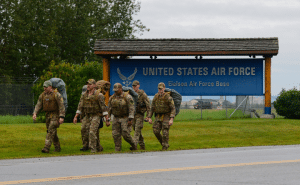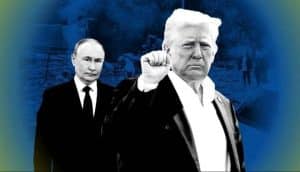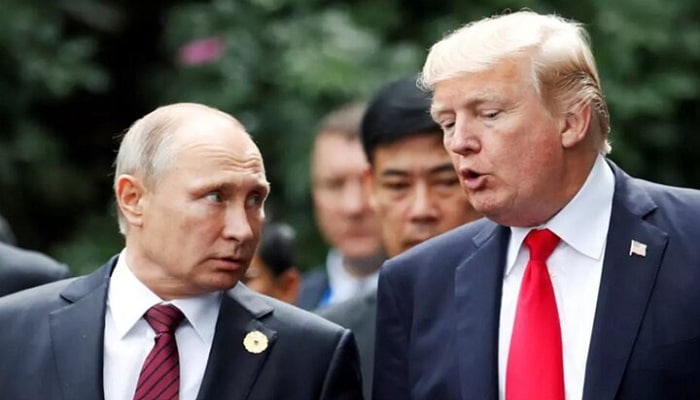PNN – Trump and Putin are set to hold their Ukraine talks in Alaska, behind closed doors, in a meeting that could reshape the future of European security.
Donald Trump and Vladimir Putin are meeting in Alaska, a meeting the White House has described as a “listening exercise” and not a place for final decisions.
Key questions arise, including why Alaska was chosen as the meeting location? What obstacles stand in the way of these talks and what is the real prospect of the Alaska meeting?
Why was Alaska chosen to host?
The choice of Alaska as the location for Trump and Putin’s meeting is the result of a combination of security, geographical, diplomatic, and political messaging calculations.
First, from a security perspective, the state of Alaska hosts Joint Base Elmendorf-Richardson near Anchorage; a military complex with complete infrastructure, multi-layered entry control, constantly monitored airspace, and the ability to host top-level officials with maximum secrecy.
This base effectively creates a “closed security zone” where all traffic and communications can be managed during the meeting, something that is much more difficult in crowded capitals or civilian locations.

Second, Alaska’s geography is a strategic advantage. The state is the most northwestern part of the United States and the closest point in the country to the Russian border; a shorter flight distance for the Russian delegation would provide reduced security costs along the way and reduce Putin’s time on American soil. At the same time, holding the summit on US soil ensures the host’s complete control over the conditions and physical security, but because Alaska is far from the center of power in Washington and the media, it temporarily reduces political and media pressures.
Third, the choice carries a symbolic and diplomatic message. The United States is not a member of the International Criminal Court, so its arrest warrant against Putin cannot be enforced on American soil; holding the summit in Alaska would solve this dilemma for Washington, while many European countries cannot host Putin without legal hassles.
Fourth, the choice of Alaska is a balance between a show of power and a reduction in political sensitivity. The meeting on American soil is a clear message of status, but the geographical distance from the capital and political centers provides space for a relatively calmer conversation. For Trump, this choice means hosting at “home,” without all the gazes and pressures from Washington influencing the meeting moment by moment. Conversely, for Putin, it is an opportunity to show himself on the same level as the United States without being present in the heart of America, but within the framework of that country’s territory.
Agendas on the table and the main obstacles to success
The most serious obstacle to the success of the Alaska summit is Ukraine’s absence from the negotiating table. Even before the meeting began, European leaders have repeatedly warned that any territorial or political agreement reached without Zelensky’s presence and consent will lack legitimacy and durability.

This concern is rooted in historical experiences, particularly the 1938 Munich Agreement, in which European powers decided the fate of Czechoslovakia without its representatives, resulting in the complete collapse of the security structure of the time. For Europe and Kiev, excluding Ukraine from the current phase of the dialogue revives the risk of repeating the same mistake.
Another obstacle is the deep divide between Moscow and Kiev. Russia continues to insist on formally recognizing the annexation of the occupied territories, while Ukraine and its allies consider the formal cession of territory an uncrossable red line. This fundamental difference will cause even preliminary discussions to reach a deadlock unless a framework for limited, humane measures, such as a prisoner exchange or a temporary ceasefire, is first agreed upon.
Any serious discussion about the borders and status of the occupied territories, according to European leaders, should be held at a later stage and with the direct presence of Ukraine in order to gain the necessary legitimacy and political stability.
Three possible scenarios ahead
Given Kiev’s pessimistic outlook, Europe’s caution, and the White House’s “listening practice” message, the outcome of the Alaska meeting can be outlined in three main scenarios:

- Neutral and political statement
The most likely outcome and scenario is to issue a general statement without any binding commitments; phrases like “progress in mutual understanding,” “continuation of talks,” or “need to find a peaceful solution.” Such a statement would, on the one hand, have little political cost for Trump and Putin, and on the other hand, send a message to public opinion that the channel for diplomacy remains open.
- Limited roadmap for ceasefire and humanitarian action
In this scenario, the parties agree on a set of limited and verifiable steps; for example, a temporary ceasefire on the lines of contact, an exchange of military prisoners, and the return of civilian hostages, along with setting a date for the next meeting, this time with the direct presence of Ukraine and European representatives. This scenario could be presented as a “tangible achievement” and maintain international pressure on Moscow, although it is still far from a fundamental resolution of the differences.
- Vague agreement on territorial issues
This option is the riskiest and most dangerous path from the perspective of Ukraine and Europe. In such a case, Trump and Putin may implicitly or explicitly agree to a “land for a ceasefire,” without strong security guarantees or Kiev’s presence in the negotiations. The result of such an agreement would be to consolidate Russia’s military gains, weaken the European security architecture, and create a rift in the united front of the West.
Ultimately, the weight of each of these scenarios depends on several factors, including the level of domestic pressure on Trump and Putin, Europe’s ability to exert influence before the meeting, and the readiness of the parties to enter the multilateral dialogue phase with the participation of Ukraine.
Overall, from the perspective of observers, the Alaska meeting is more of a test of the parties’ positions and flexibility than a place for a final agreement. The location and limited format of the negotiations make this meeting a “political starter” rather than an end point. However, the political weight of such an event in the midst of a war of attrition is so high that even a limited outcome such as an agreement on humanitarian measures or the establishment of a stable communication channel could change the diplomatic equation.

